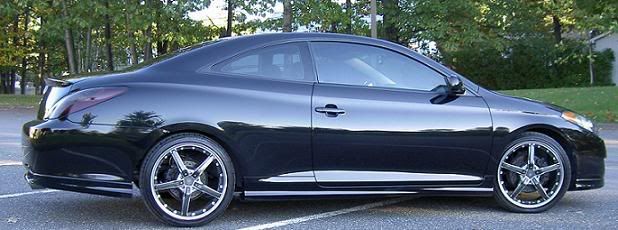Sebas007 wrote:PhreakdOut question for you about OEM setup.
Do all the restrictive parts on the exhaust is made to keep a certain amount of pressure in the engine for maximizing performance. I heard that some Asian company have this habit in their design. I know the principle is more air, more fuel = more power
I was just seeking the main reason why they did a restrictive exhaust setup ? Can it be to control the power to not get too powerful to not beat some Lexus model...to not make in-house competition ? Can it be to be able to put better MPG numbers in magazine ? What else ??
If you can answer me on this I would really appreciate

Every small change to exhaust, fuel mapping, timing, ECU programming has some impact to the torque and power curves.
Of course, Toyota buyers couldn't care less if their cars have more horsepower over 5K RPM. since the transmission programming will not let them stay in that range very long. The idea is to tune the power to all hit within the most common operating range. (Between 2000-3700 rpm).
In the case of exhaust, adding some restriction shifts this curve. (As does the general layout of the pipes.) Longer runners off the cylinders increases low end torque at the expense of upper end power. Inversely the same for short runners increasing upper end power.
Fuel economy is also a major concern. As you can imagine, increasing power will also impact fuel economy. Now we can easily measure horsepower on a dyno and see what impact a small change has. But the fuel economy is a difficult test that is only done a couple times during the development. During development, fuel economy is modeled by computer. (Because the actual test is not repeatable enough accurately measure the impact of small changes.) It is not uncommon for the first actual fuel economy test to be run on a first preproduction vehicle. If the computer models were way off, the car maker will try to adjust the design in the least expensive way that will shift the power curve. The ECU's fuel and timing programming is usually the first to be hit. After that is usually the exhaust. (Because it is easy to change and tooling is minimal.)
Emission Performance will also be a driving factor. Slowing the exhaust flow will obviously slow the exhaust through the converter, giving more time for the reaction to take place. This also allows for a smaller converter to be used. The cost difference between a Big3 converter substrate and one by Toyota is usually over $100. This doesn't sound like much, but on Camry production, it represents a estimated $45 million dollar savings.
Sorry for the long winded response. I hope this helped.










